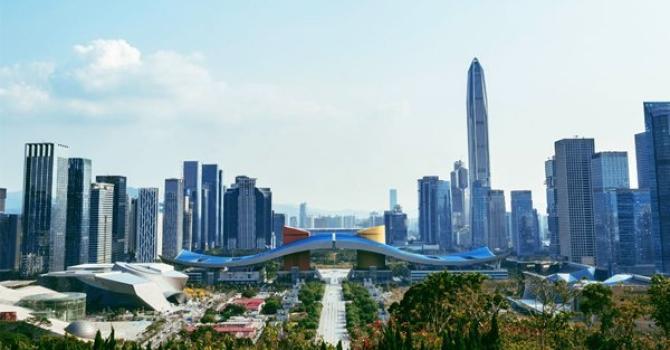HK stands to gain by helping mainland's advanced manufacturing
What contributions can Hong Kong make to the Chinese mainland’s advanced manufacturing policy?
Hong Kong can make significant contributions to the mainland’s circular economy and advanced manufacturing policies.
The mainland is accelerating efforts to achieve breakthroughs in core technologies in key fields, given that upgrading the manufacturing sector is vital to bolstering the real economy.
Significantly, new Premier Li Qiang’s first policy call was for the country to make a big push to improve how things are made, as China is the largest manufacturing economy in the world, accounting for over 28 percent of global manufacturing output that adds a total value of around $4 trillion to the world economy.
Advanced manufacturing is not just about making difficult things like semiconductors. It is also about smarter and greener production of all things using technology so that China can remain technologically competitive in what it produces for the export and domestic markets.
The other important mainland policy related to manufacturing is the circular economy. This is an approach based on the reuse and regeneration of materials in making materials and products to achieve an environmentally sustainable way of production. A key aspect of circularity is minimizing or eliminating waste in the production process.
A circular economy requires the redesigning of products to reuse and recycle the materials used to minimize waste so that fewer virgin materials have to be used. As such, there will be less pollution, including carbon emissions, that causes global warming.
Hence, production should become more innovative and efficient and implement circular processes.
The route to “smart” is via investing in digital technologies, and “circularity” is using green technologies to reduce environmental harm.
China is the manufacturing hub for many types of light and heavy industries. They must all upgrade to be more innovative, greener, and circular.
Hong Kong played an essential role in developing light manufacturing on the mainland from the 1980s when local manufacturers relocated their factories across the border to take advantage of the low-cost land and labor resources.
While Hong Kong focused on building up its professional services in the city to support export manufacturing on the mainland, there was a sizable number of Hong Kong-owned factories that transformed themselves from low-cost, low-tech producers to becoming important contractors along global supply chains, such as in the fashion and consumer electronics sectors. There are many successful examples today among Hong Kong businesses.
In the past decade, the Hong Kong Special Administrative Region government has adopted a reindustrialization policy to help manufacturers meet new demands through research and development, better designs, and improved production methods using technology. While large-scale production is not the aim for Hong Kong, smart production on a small scale is beneficial to trialing innovations that could be scaled up on the mainland.
The government can now reap investments it has sown in industrial innovation. A good example is the Hong Kong Research Institute for Textile and Apparel (HKRITA), funded by the HKSAR government and the fashion industry. Since its establishment in 2006, HKRITA has become a global research center of note.
For example, it has invented many technologies, including an upcycling technology that turns waste textiles into a new yarn adopted by the industry and that has won international awards. It is an excellent example of circular-green tech.
One of its latest inventions deals with microplastics, a major environmental headache. This technology captures microplastics in materials and clothing that, when washed, get flushed into the sea, ending up consumed by sea life and damaging biodiversity. Its removal solves the problem to a great extent.
Another government-funded example is Ecoinno, based at the Hong Kong Science Park with subsidiaries on the mainland. Japan has developed a biodegradable plant-based material with high heat tolerance that can replace single-use plastics.
The invention of new materials using chemistry and biology by HKRITA and Ecoinno that have a wide application could be revolutionary.
Recycling textiles made from many types of raw materials is essential to many industries looking to reduce their use of virgin resources. A biodegradable material that can tolerate high heat can replace cooking utensils, disposable lunchboxes, tableware, coffee capsules, and medical and pharmaceutical containers, and can change industrial packaging.
With examples of successes, this is the right time for the government to reflect on how it could advance. The first step is considering how Hong Kong could create a new and compelling narrative about its innovation and technology capabilities tied to industrial applications.
These inventions from Hong Kong need to be articulated in a way that resonates with the mainland and fits its policies of circularity and advanced manufacturing, as well as enabling global supply chains to recognize Hong Kong’s prowess.
In addition, Hong Kong is an international finance center with ambitions to become a green-tech and green-finance hub. We need to promote mature players in green tech, as well as help startups to get going.
The government can recalibrate to ensure it has appropriate policies to help strengthen different parts of the green-tech landscape and to see how to assist the mature players to go further in raising green capital. For example, could some of the green inventions be packaged for listing on the stock exchange so investors can put money into them?
The financial secretary’s 2023-24 Budget includes Hong Kong hosting green-tech week toward the end of the year. That is an opportunity to showcase mature green-tech inventions and startups, including curating good discussions that link R&D, smart and green manufacturing, and finance.
Contributed by Prof. Christine Loh. The article was published on China Daily:
https://www.chinadailyhk.com/article/324984



